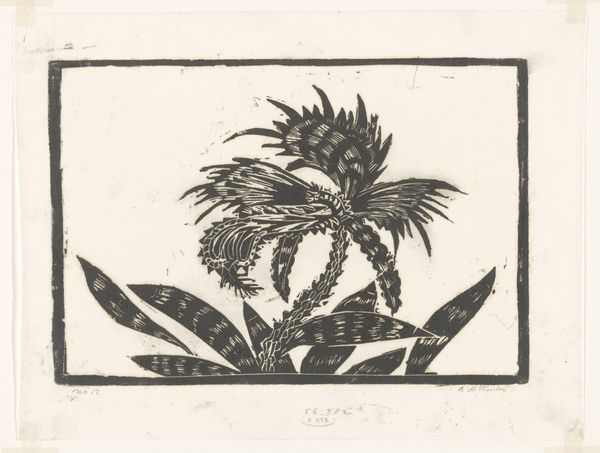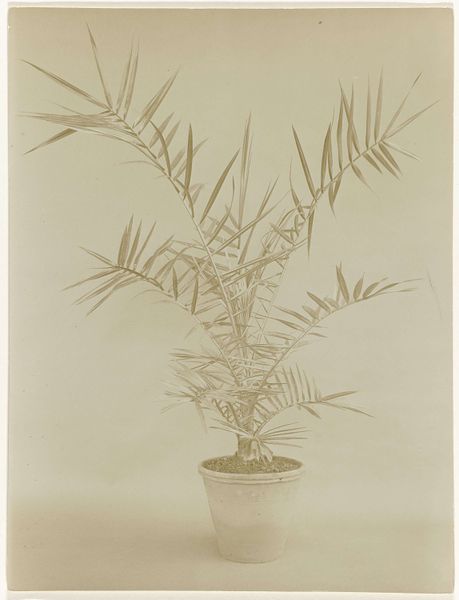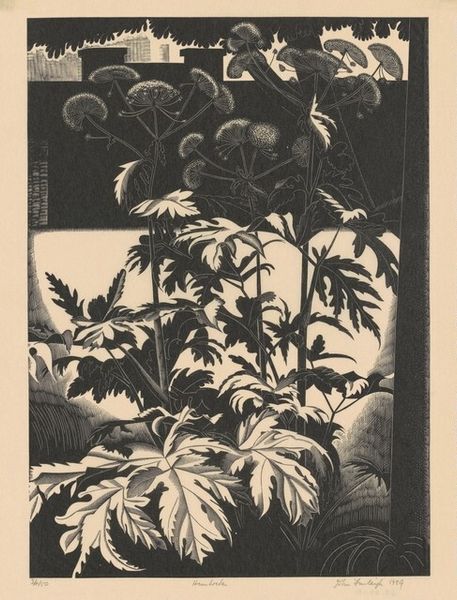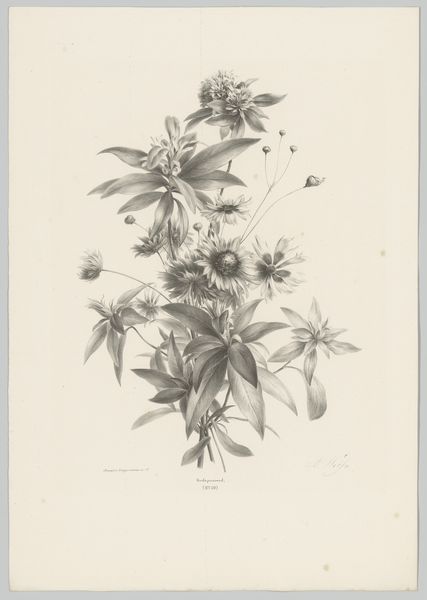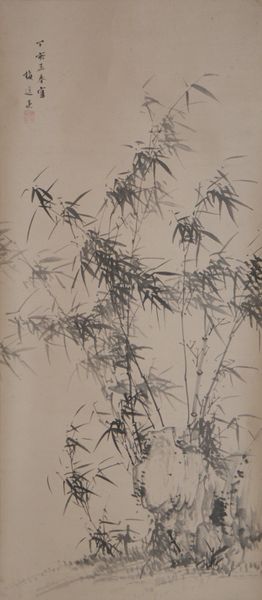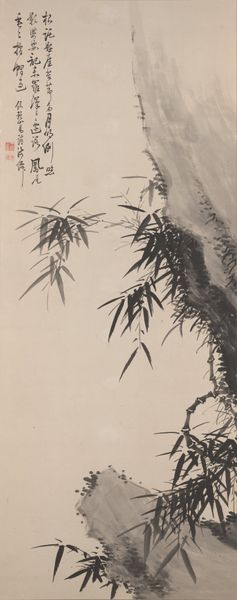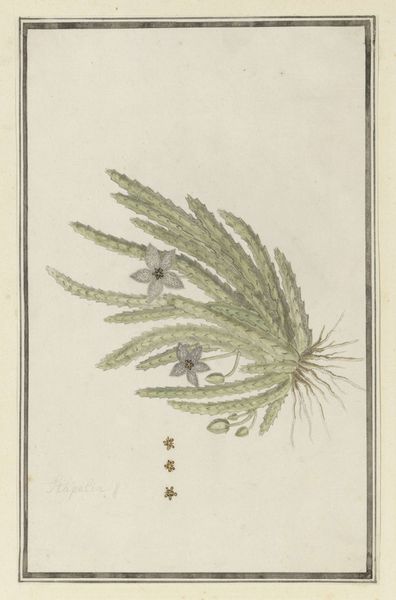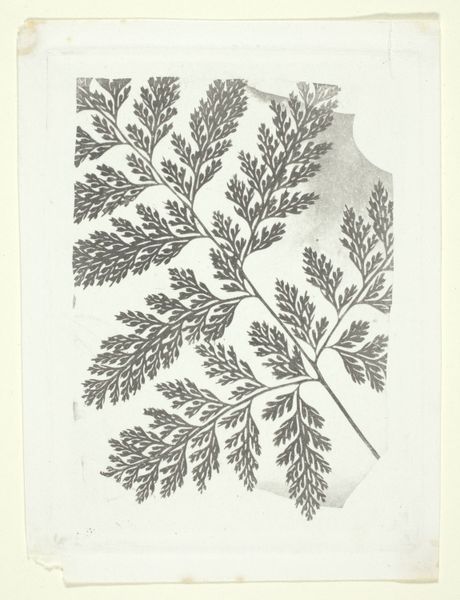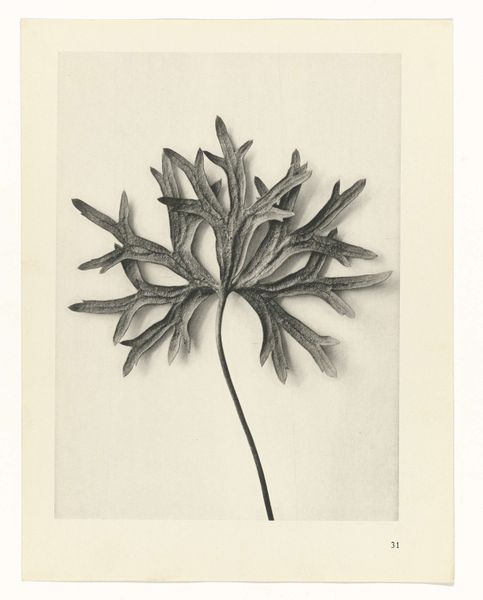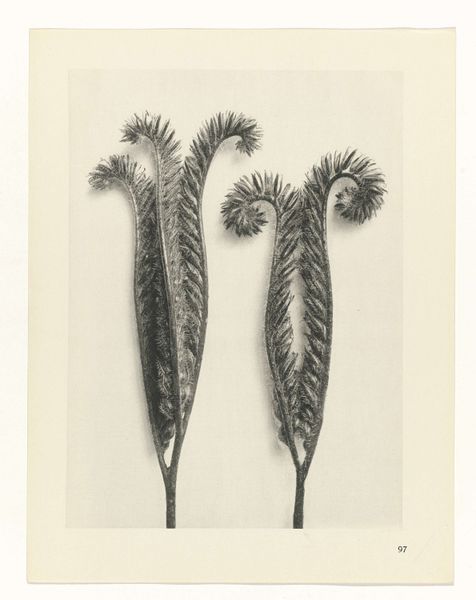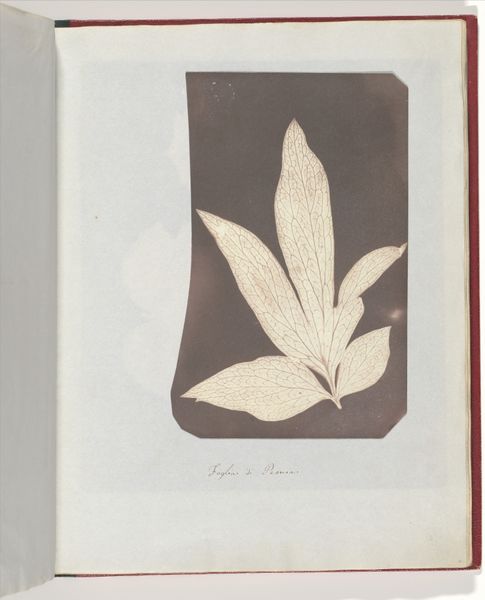
Dimensions: image: 15.08 × 14.13 cm (5 15/16 × 5 9/16 in.) sheet: 21.75 × 17.3 cm (8 9/16 × 6 13/16 in.)
Copyright: National Gallery of Art: CC0 1.0
Curator: Our attention is drawn to Lionel Lindsay’s print, “Chardon,” created around 1930. He crafted this intricate botanical study using the woodcut technique. Editor: Immediately, I'm struck by the dramatic contrast. The sharp, white lines against that deep black background give it a really intense feel. You can almost feel the labor in the precise carving! Curator: Absolutely! That starkness emphasizes the symbolism inherent in the thistle motif. Thistles, throughout history, have signified everything from protection and resilience to pain and adversity. Editor: And that link to manual labor, right? The working classes historically adopted the thistle in places like Scotland, using its prickly defiance as a badge of honor against invaders or hardship. It's material existence embodies the values of resistance. Curator: Precisely. It's interesting how Lindsay, working within the Art Nouveau tradition, employs a symbol loaded with such deeply ingrained associations. Art Nouveau often embraced nature, but its embrace here feels more defiant. Editor: I'm thinking of the wood itself too. Sourcing the wood block, selecting the tools, then the meticulous work to bring out that level of detail with a subtractive method… you have to admire that tangible process. A machine could never replicate this quality, it embodies care. Curator: Consider too, the historical context; in the 1930s, traditional skills were either idealized, demonized, or under pressure because of machines taking over. I sense a quiet nod to tradition but rendered in a stylized manner of the present moment. Editor: And for consumers? Owning a print like this, accessible compared to paintings perhaps, allowed for domestic aesthetic enrichment with all the socio-political symbolism folded in, of course. What statements were they declaring when hung inside private walls? Curator: It’s remarkable to contemplate how an artwork's cultural echoes are layered through its visual design and symbolic meaning across time. Editor: Looking at “Chardon," what truly intrigues me are the unseen hands and history imbued within each line and mark and the means by which this labor manifested such striking beauty in the world.
Comments
No comments
Be the first to comment and join the conversation on the ultimate creative platform.
